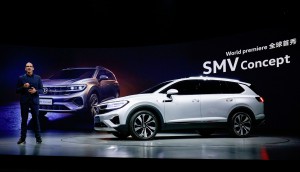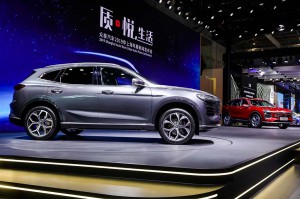For much of the past two decades, China’s new vehicle market was the envy of the world, with routine double-digit annual growth approaching triple-digit gains on several occasions – but the numbers were down 14.6% in April, marking the 10th consecutive monthly decline.
At 1.98 million vehicles, China remains solidly in the lead as the world’s largest automotive market, but the downturn raises troubling issues for both foreign and domestically owned brands, such as General Motors, Volkswagen, Toyota, Geely and Great Wall, impacting industry earnings around the globe.
With China locked in an escalating trade war with the United States and the country’s overall economy showing signs of weakness, industry analysts question how soon the car market will show a recovery. The downturn could force automakers to look for ways to export products from increasingly underutilized Chinese plants, according to observers.
(Trade talks with China vital to the auto industry. Click Here for the story.)
The nearly 15% downturn in sales last month followed a 5.2% dip in March and a 14% decline in February. The last positive month in China came last June – though it saw nowhere near the sort of gains automakers had been used to up until mid-decade.
There were a few exceptions, Toyota Motor Corp. reporting a 20% increase in sales for April, an upturn fueled by the addition of new, as well as upgraded, Toyota and Lexus products.
But it was among the rare exceptions, with most domestic and foreign-owned brands reporting downturns. Shanghai-based SAIC Motor Corp., for one, said its group sales were off nearly 17 percent. SAIC partners with both General Motors and its rival Volkswagen AG, the German maker long the leader in the Chinese market.
Weakening sales have hammered corporate earnings, manufacturers including Ford, GM and Mazda reporting weakened first-quarter numbers as a result of the Chinese downturn. In turn, investors have been responding by driving down shares of a number of the automakers heavily dependent upon the Chinese market.
(Click Here for more about Ford’s second act in China: Ford China 2.0.)
The industry has been taking steps to turn things around, for one thing slashing prices on new models. At the same time, the government has weighed in with new tax cuts. Bu those steps may actually be having a negative impact, many Chinese motorists holding off buying, convinced even better deals could be in the offing, according to the China Association of Automobile Manufacturers, or CAAM.
The latest monthly slowdown also may have been impacted by newly tightened government emissions standards, reported the Reuters news service.
That said, the New Energy Vehicle, or NEV, standards the Beijing government implemented in late 2017 actually helped boost the market, with qualified plug-in hybrid and pure battery-electric vehicle sales jumping 18.1%last month, to 97,000, according to CAAM. China is now the world’s largest market for plug-based vehicles, sales last year climbing by 62 percent. Demand has been particularly strong in major urban markets like Beijing and Shanghai where local restrictions on monthly new vehicle registrations are waived for certain electrified products.
The sales slump could worsen, several observers told TheDetroitBureau.com, especially if the ongoing trade war with the U.S. continues to worsen and pulls down China’s economy. The Trump Administration enacted new tariffs on Chinese-made goods earlier this month and on Monday the Beijing government responded by raising tariffs on $60 billion of American imports.
Some observers caution that the White House may be facing a case of unintended consequences. For years, automakers struggled to keep up with booming Chinese car sales by rapidly adding new capacity. Now, however, many plants are operating well below capacity, leaving some looking for alternative opportunities.
Zotye currently is selling at an annualized rate of only about 400,000 vehicles, but has capacity of 1 million. Based in Yongkang, Zhejiang, China, the company has negotiated a deal with American start-up HAAH to distribute its products in the United States. The goal is to launch sales next year, said HAAH CEO Duke Hale. The auto veteran said he is hoping the trade war will be resolved by that point but added that even if it isn’t, the cost of the Chinese-made vehicles are low enough to absorb a 25% and still undercut Detroit, Japanese and Korean rivals in the American market.
(What does Zotye have in mind for the American market? Click Here to find out.)




Hopefully, the Trump 25% tariffs cover Chinese cars.